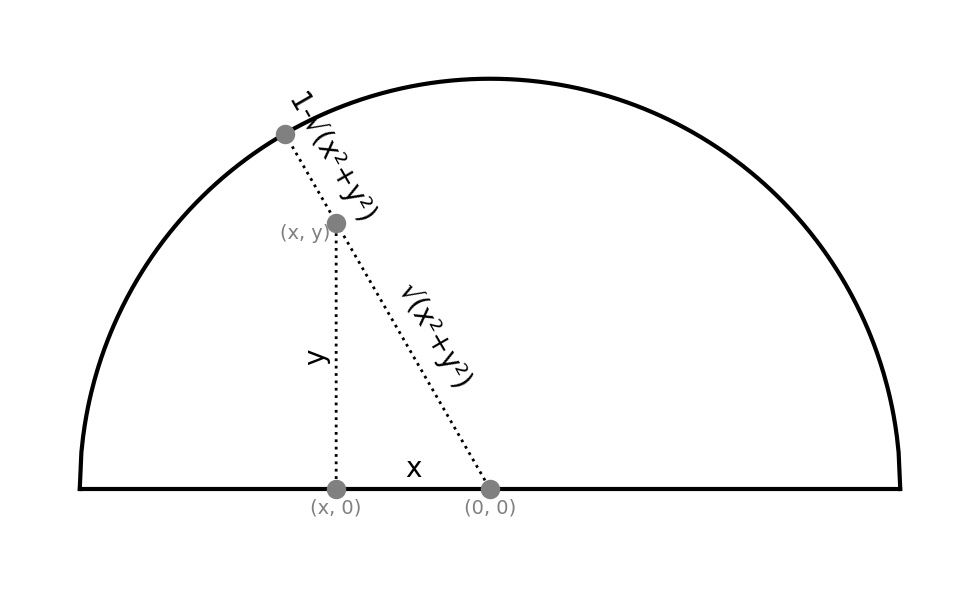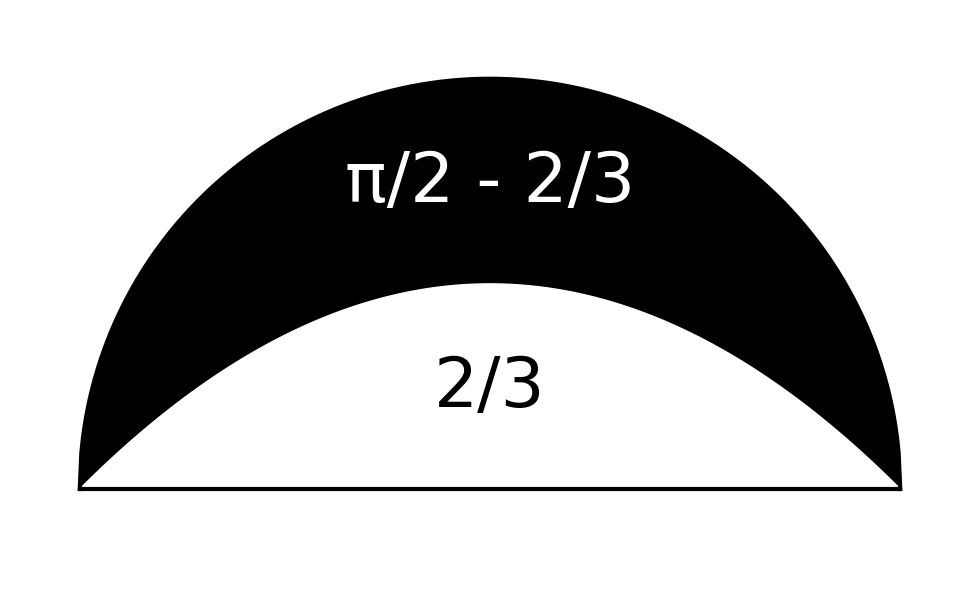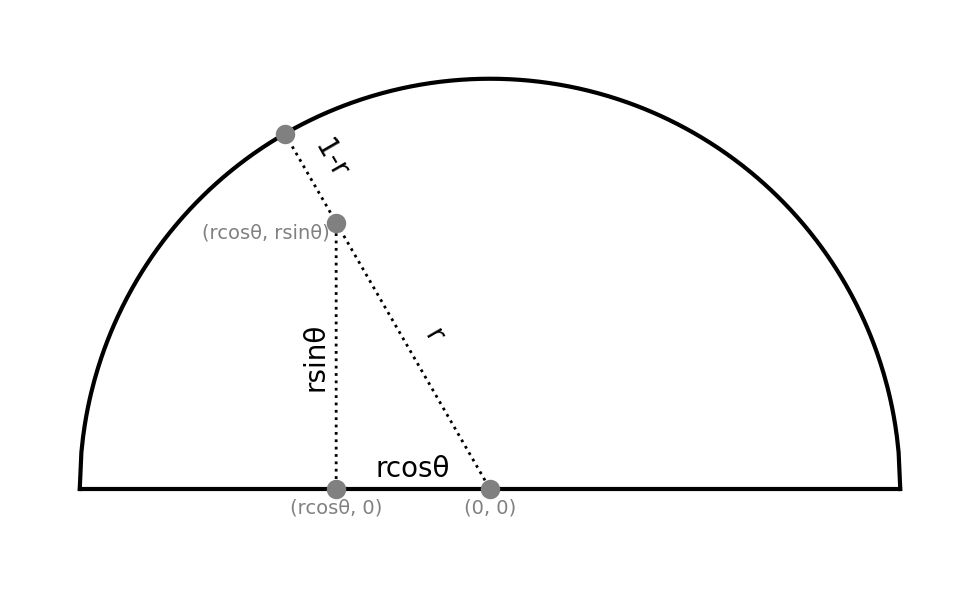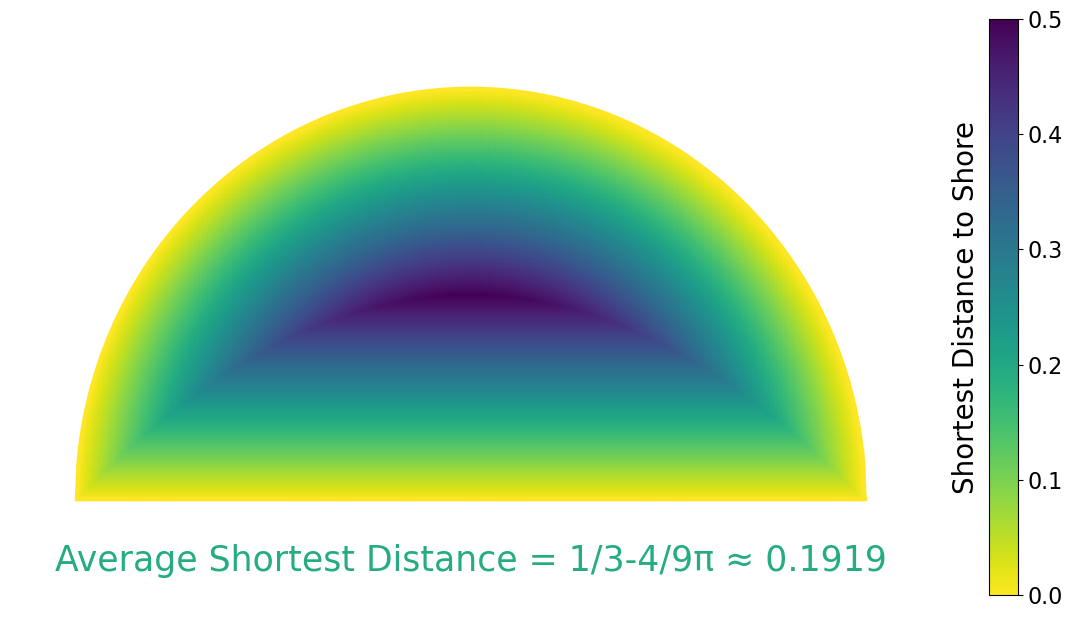A Pi Day Puzzle¶
Fiddler¶
From Jason Zimba (a colleague of mine at Amplify), comes a puzzle that’s perfect for Pi Day:
You are planning a picnic on the remote tropical island of 𝜋-land. The island’s shape is a perfect semi-disk with two beaches, as illustrated below: Semicircular Beach (along the northern semicircular edge of the disk) and Diametric Beach (along the southern diameter of the disk).
If you pick a random spot on 𝜋-land for your picnic, what is the probability that it will be closer to Diametric Beach than to Semicircular Beach? (Unlike the illustrative diagram above, assume the beaches have zero width.)




